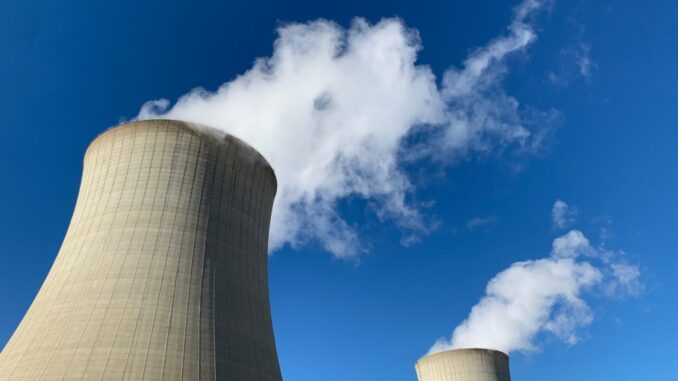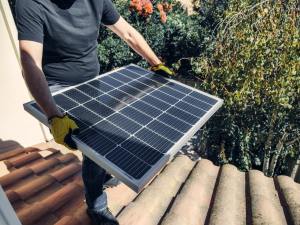
This coverage is made possible through a partnership betweenWBEZ and Grist, a nonprofit, independent media organization dedicated to telling stories of climate solutions and a just future. Sign up for WBEZ newsletters to get local news you can trust.
Illinois is the home of the world’s first nuclear reactor, and has since made a business of splitting atoms. Today, nuclear power is the source of more than 50% of the state’s energy, and legislators just decided Illinois needs more of it.
With bipartisan support, Illinois lawmakers last week eliminated the state’s nearly 36-year-long ban on construction of new nuclear reactors, opening the door for the development of emission-free nuclear power that proponents say will accelerate the state’s transition to clean energy.
The plan, however, will exclude the large scale nuclear reactors that make up the entirety of Illinois’ nuclear fleet in favor of smaller, untested nuclear reactors – which could take years to build.
The new legislation will limit the kind of nuclear reactors that can be built within the state to small modular reactors (SMRs) with an electrical output of only up to 300 megawatts. For comparison, the Byron Power Station, a large-scale light water reactor in northern Illinois, can generate up to 2,347 megawatts – enough to power more than 1.7 million homes.
The idea is the smaller reactors will be produced at factory scale, which will lower costs over time and bring them online faster than previous generations of reactors. Currently, there are no SMRs in operation or even production anywhere in the U.S.
As coal burning plants go offline in southern Illinois to meet a 2045 statewide climate goal to offramp the state from fossil fuels, State Sen. Sue Rezin, the lead co-sponsor of the bill, said SMRs could be a boon. And even a lifeline to the region, which has faced energy issues with affordability and reliability.
“You have a very highly skilled workforce that used to work at the coal plants that can now build out the new nuclear plants and work at the new nuclear plants,” Rezin said. “It’s a win-win.”
She adds that the state’s major agricultural and technology forward industries could capitalize on the emission free energy to decarbonize.
Abe Scarr, the director of the Illinois Public Interest Group, a non-profit watchdog group, opposed the legislation.
“I wouldn’t be confident that based on this, anybody’s going to be building SMRs in Illinois,” Scarr said. “It’s still a speculative technology. The largest company in the United States that was moving towards building one just announced that it was scrapping the project because it had gotten way too expensive.”
The NuScale Power Corporation announced last week that its venture, a first of its kind SMR project in the country, fell apart after 10-years of work and more than a $1 billion pledge from the Biden administration due to issues with financing.
Even so, the U.S. Department of Energy is counting on more nuclear power. In a report released this year, officials estimate that to successfully hit net-zero emissions by 2050, the country will need to add an additional 200 gigawatts of reliable generating capacity. To hit that target, the agency is looking at nuclear power such as SMRs.
But the American public soured on nuclear after the 1979 partial meltdown of the Three Mile Island power plant in Pennsylvania, and nuclear development nationwide all but halted. Only a handful of reactors have come online since.
States started banning new construction of nuclear reactors until the federal government could identify a permanent solution for the nuclear waste piling up across the country. In total, 16 states enacted some level of nuclear ban. Illinois put its own in place in 1987. A masterplan for the country’s nuclear waste never materialized.
Illinois is done waiting. Gov. JB Pritzker has vowed to sign the new bill, and soon Illinois will join Wisconsin, Kentucky, Montana and West Virginia in rolling back nuclear bans.
Mark Nelson, founder of the Chicago-based energy consultancy group Radiant Energy, said the state is making a mistake by banking on SMRs.
“It’s going to be a really rough and exceptionally difficult energy transition if we don’t do it based on nuclear energy, which we have proven to work in upstate Illinois,” Nelson said.
He said the exclusion of large-scale reactors is a mistake because “the only proven nuclear plants in the world are cut out of this bill. And the only ones we’re allowed to build are the ones that are expensive and going bankrupt.”
The law would take effect in 2026, and according to Rezin, could take anywhere from six years to a decade to obtain the permits necessary to build a new reactor in the state.



